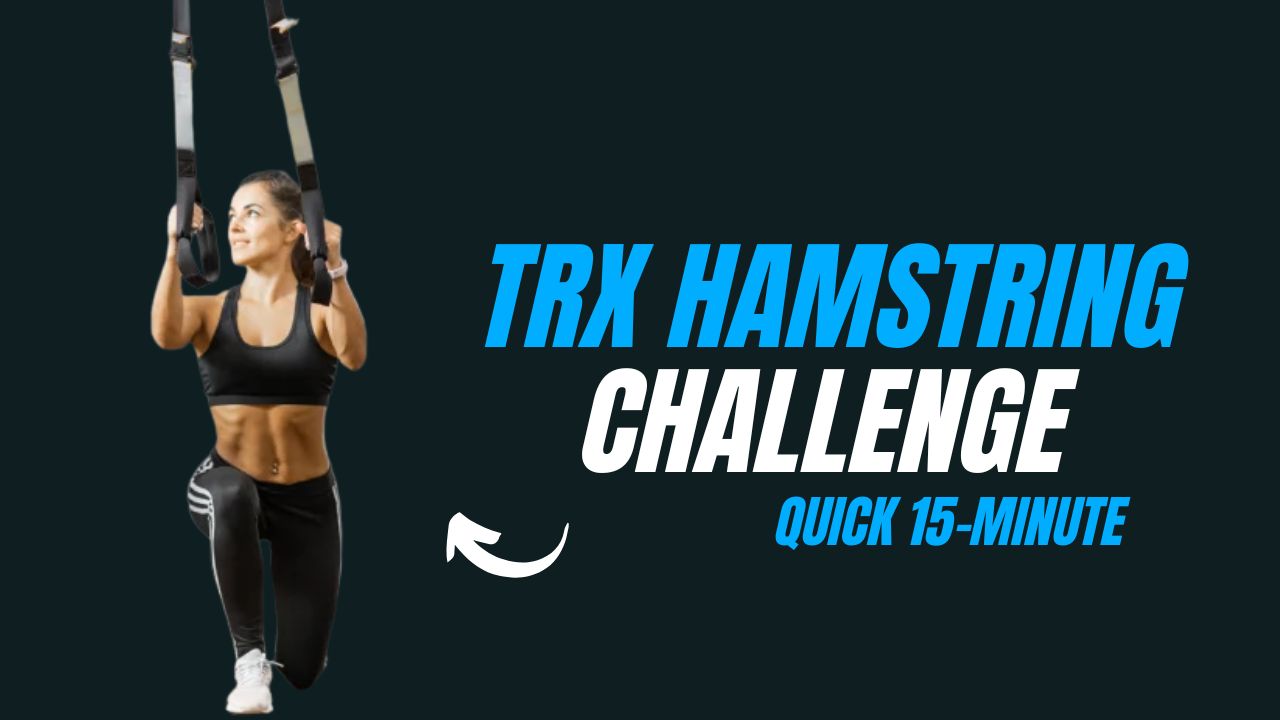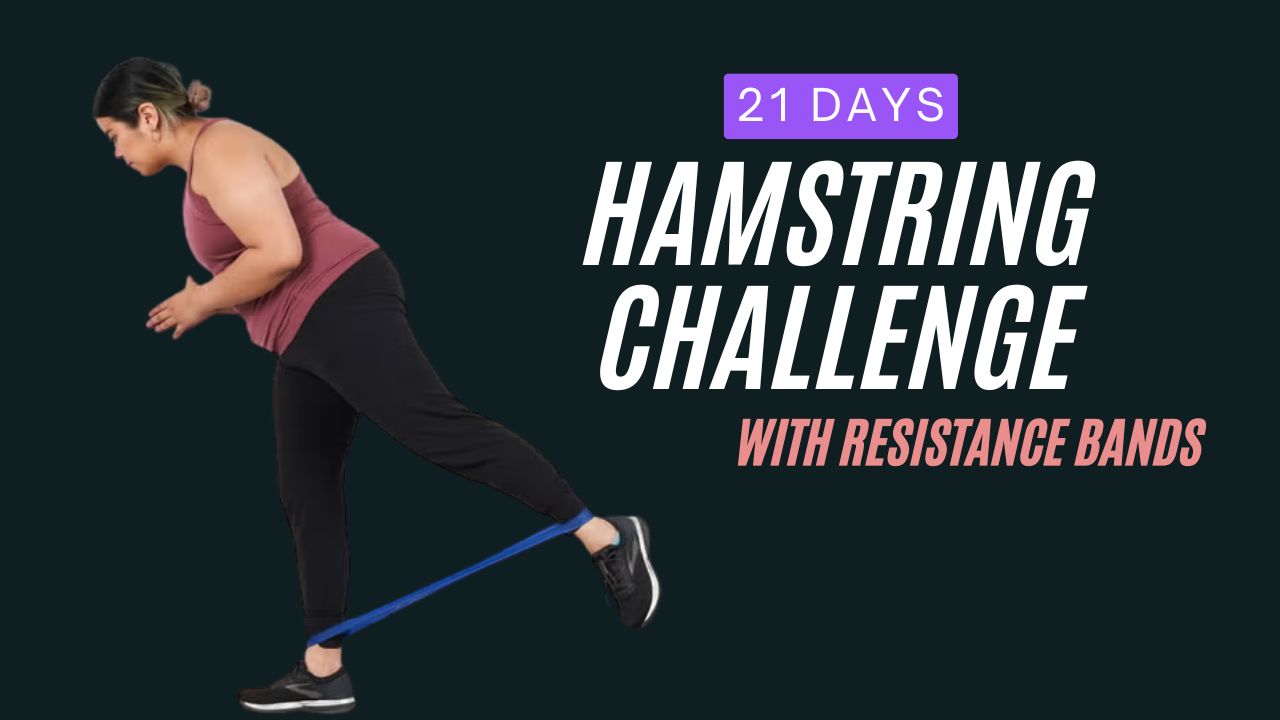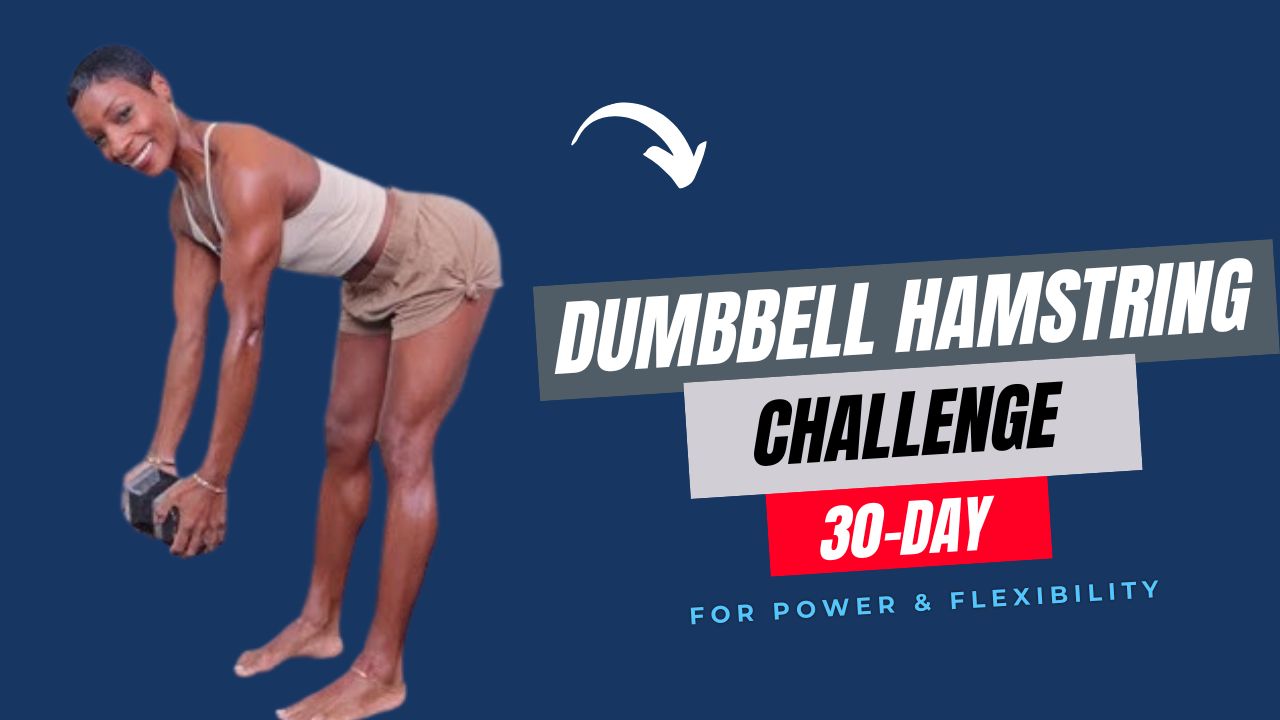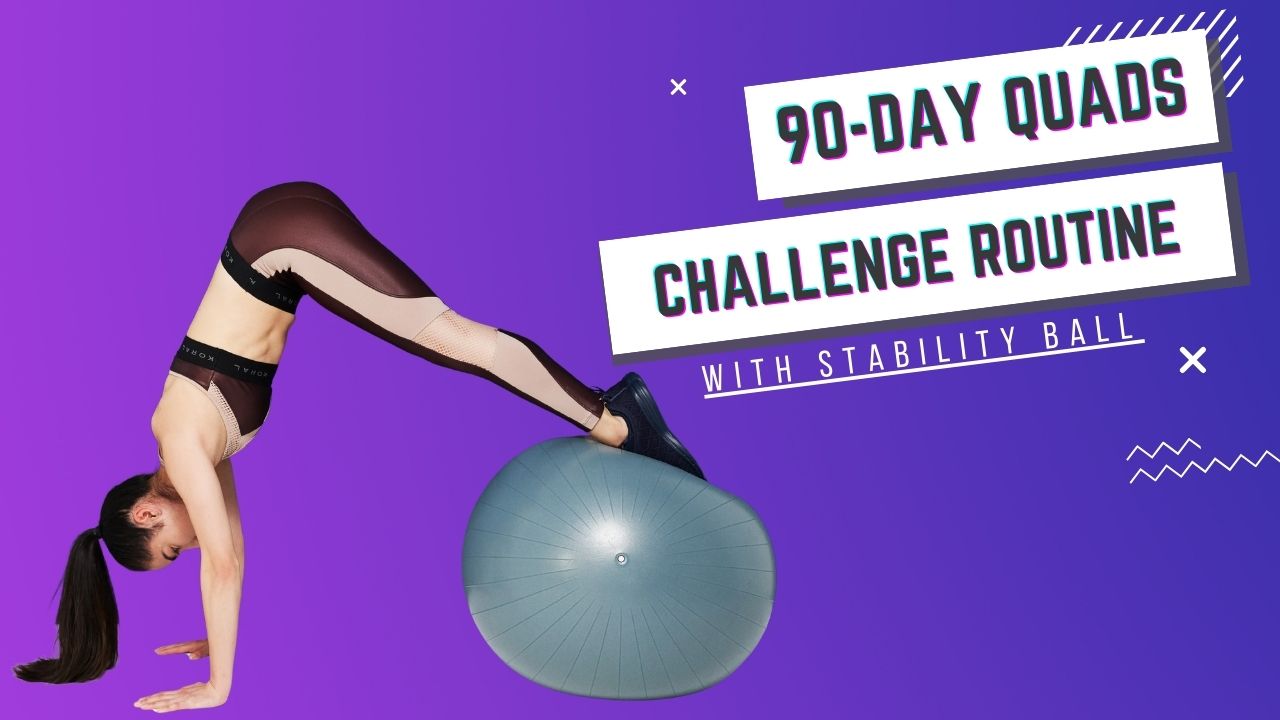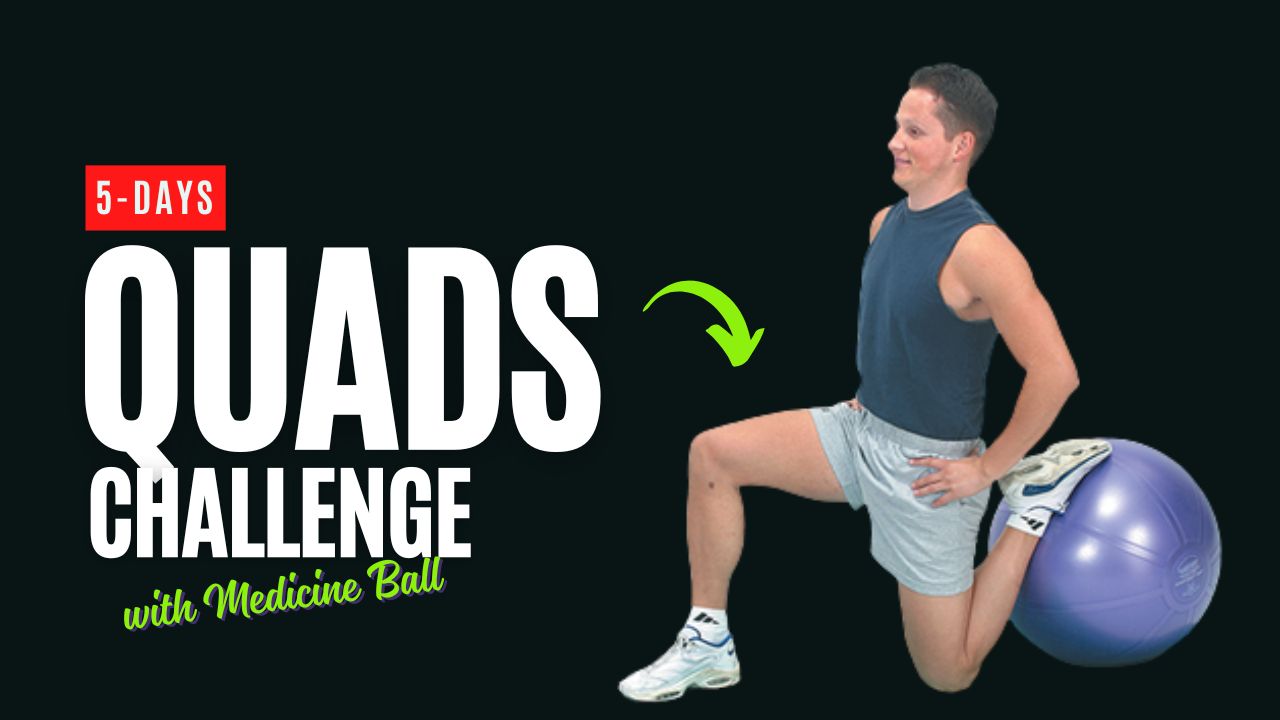A strong core is more than just visible six-pack abs—it’s the powerhouse of your body. Every movement you make, from walking and lifting groceries to running and playing sports, stems from your core strength.
What many people don’t realize is that your core muscles don’t just affect aesthetics; they also play a huge role in protecting your joints.
Do you know?
Studies show that weak core muscles increase the risk of back pain, hip discomfort, and knee problems because your joints end up compensating for the lack of stability in your midsection. Building core strength with targeted exercises, especially with dumbbells, can drastically improve posture, balance, and joint health.
This 21-Day Dumbbell Core Challenge is designed to help you sculpt stronger abs, improve your mobility, and protect your joints. By the end of the program, you’ll not only feel tighter and leaner but also move with greater confidence and less discomfort.
Let’s break down the most effective dumbbell core exercises, explain how to do each correctly, and then put them into a structured 21-day workout routine you can follow step by step.
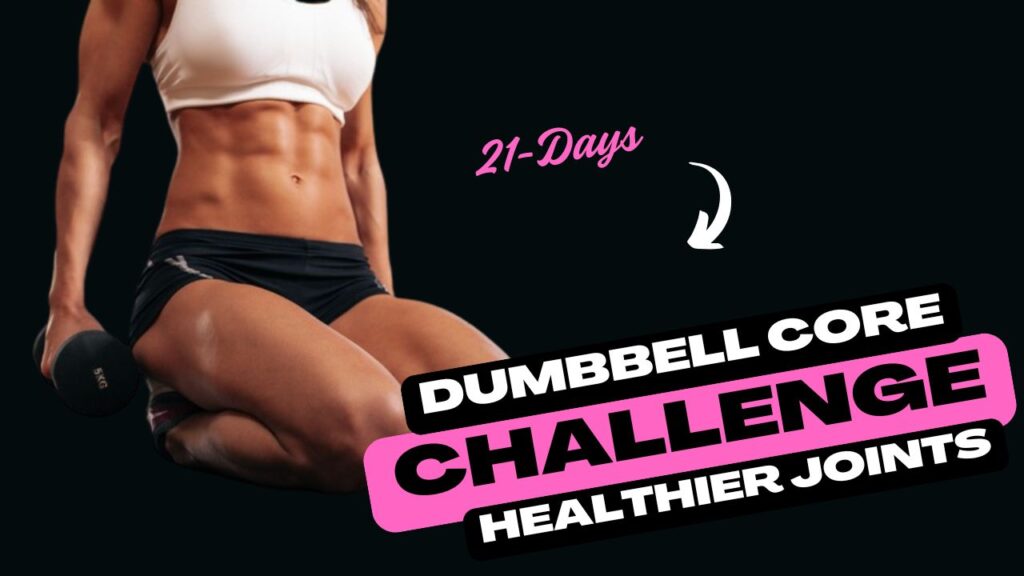
Table of Contents
Benefits of Dumbbell Core Workouts for Abs and Joints
Before diving into the exercises, it’s important to understand why dumbbells make such a difference:
- Added Resistance: Unlike bodyweight-only exercises, dumbbells force your muscles to work harder, leading to faster strength and endurance gains.
- Joint Stability: Dumbbell moves improve coordination, reducing unnecessary pressure on knees, hips, and shoulders.
- Improved Posture: Strengthening deep core muscles reduces spinal stress, lowering the risk of back pain.
- Functional Strength: Dumbbell exercises mimic real-life movements, which makes your body more resilient in daily activities.
What Can Happen After 30 Days of This Challenge
| Positive Changes | Why It Happens |
|---|---|
| Stronger and more defined abs | Consistent resistance training strengthens and tones abdominal muscles. |
| Improved posture and balance | A stronger core supports the spine and stabilizes the body during daily activities. |
| Reduced lower back discomfort | Core strength reduces pressure on the lower back, easing pain and stiffness. |
| Better joint stability | Stronger core muscles absorb impact and protect hips, knees, and shoulders. |
| Increased workout performance | A solid core enhances strength, endurance, and power in other exercises. |
| Noticeable fat reduction (if paired with diet) | Core exercises boost metabolism, and when combined with proper nutrition, reduce body fat. |
| Greater confidence in movement | Daily consistency builds both physical resilience and mental discipline. |
Do’s & Don’ts for the 21-Day Dumbbell Core Challenge
| Do’s | Don’ts |
|---|---|
| Warm up for 5–10 minutes before starting to activate muscles and protect joints. | Don’t skip warm-ups or start lifting heavy weights immediately. |
| Use controlled, slow movements for maximum muscle engagement. | Don’t swing the dumbbells or rely on momentum. |
| Start with a comfortable dumbbell weight and progress gradually. | Don’t choose weights that compromise your form. |
| Focus on breathing—exhale during effort, inhale during release. | Don’t hold your breath while lifting, as it increases pressure on the spine. |
| Keep your spine neutral and core tight in every exercise. | Don’t arch your lower back or strain your neck. |
| Allow your core muscles at least 24 hours of recovery before repeating high-intensity sessions. | Don’t train abs aggressively every single day without rest. |
| Stay consistent for the full 21 days for noticeable results. | Don’t expect visible abs overnight—progress takes time and nutrition. |
| Pair the challenge with a balanced diet for best results. | Don’t rely on exercise alone while ignoring food habits. |
The Exercises – With Step-by-Step “How To”
1. Dumbbell Russian Twists
A classic rotational exercise for targeting obliques and improving spinal mobility.
How to do it:
- Sit on the floor with knees bent, holding a dumbbell with both hands.
- Lean back slightly, keeping your spine straight.
- Lift your feet slightly off the ground (optional for added difficulty).
- Rotate your torso to the right, bringing the dumbbell beside your hip.
- Return to center, then rotate left.
- Continue alternating sides.
Tip: Keep your chest open and movements controlled—avoid just swinging the dumbbell.
2. Dumbbell Side Bend
A simple but effective exercise to strengthen obliques and reduce lower back stiffness.
How to do it:
- Stand tall with feet shoulder-width apart, holding a dumbbell in your right hand.
- Slowly bend sideways at the waist toward the dumbbell.
- Return to starting position.
- Complete all reps on one side, then switch to the other.
Myth Buster: Many people think side bends make the waist bigger—this isn’t true. Properly performed, they actually tone and strengthen obliques without adding bulk.
3. Dumbbell Dead Bug
Perfect for beginners to build stability and protect the lower back.
How to do it:
- Lie on your back, holding a dumbbell in each hand directly above your chest.
- Raise your knees to 90 degrees.
- Slowly lower your right arm and left leg toward the floor.
- Return to the start, then switch sides.
- Keep your lower back pressed to the ground throughout.
4. Dumbbell Plank Drag
A dynamic move that challenges stability while engaging abs and shoulders.
How to do it:
- Get into a plank position with a dumbbell placed beside your right hand.
- With your left hand, drag the dumbbell across to the left side.
- Place your hand back down and switch sides.
- Keep hips low and avoid twisting as you move the dumbbell.
5. Dumbbell Overhead Sit-Up
Adds resistance to a traditional sit-up, boosting core strength and shoulder stability.
How to do it:
- Lie on your back with knees bent, holding a dumbbell with both hands above your chest.
- As you sit up, push the dumbbell overhead.
- Slowly lower back down with control.
Fact: Overhead sit-ups not only engage abs but also improve mobility in the shoulders, which is often neglected in ab workouts.
6. Dumbbell Side Plank with Hip Lift
Strengthens obliques and stabilizes the spine.
How to do it:
- Lie on your side, propping yourself up on one forearm.
- Place a light dumbbell on your hip.
- Lift your hips up into a side plank.
- Lower hips slowly, then lift again.
7. Dumbbell Woodchopper
A functional, rotational exercise that strengthens abs and improves joint mobility.
How to do it:
- Hold one dumbbell with both hands.
- Start with the dumbbell above your shoulder on one side.
- Move diagonally across your body, finishing near your opposite hip.
- Return to start and repeat.
Tip: Control the motion—don’t swing the dumbbell with momentum.
8. Dumbbell Hollow Body Hold with Press
An advanced move for deep core engagement.
How to do it:
- Lie flat on the ground, holding a dumbbell in both hands at chest level.
- Lift your legs slightly off the floor and raise your shoulders.
- Press the dumbbell upward while maintaining the hollow position.
- Hold for 20–40 seconds.
9. Dumbbell Standing Oblique Twist
Improves rotation strength and helps protect the spine.
How to do it:
- Stand tall holding a dumbbell at chest height.
- Twist your torso to the right, then back to center, then to the left.
- Keep hips facing forward—focus the twist in your core.
10. Dumbbell Reverse Crunch
Targets lower abs and strengthens hip flexors.
How to do it:
- Lie on your back with a dumbbell secured between your feet.
- Lift your knees toward your chest.
- Slowly lower back down without touching the ground.
The 21-Day Dumbbell Core Challenge Routine
This plan alternates intensity and volume to keep your core engaged while allowing proper recovery. Each workout takes 15–20 minutes per day.
Weekly Breakdown
- Day 1 – Core Blast (Russian Twists, Side Bends, Dead Bug, Plank Drag)
- Day 2 – Stability & Endurance (Overhead Sit-Up, Side Plank with Hip Lift, Hollow Body Hold with Press)
- Day 3 – Mobility Focus (Woodchopper, Standing Oblique Twist, Reverse Crunch)
- Day 4 – Rest or Light Cardio
- Repeat Cycle (6 days active, 1 rest day per week)
Challenge Table
| Day | Exercises | Sets x Reps/Duration | Focus |
|---|---|---|---|
| 1 | Russian Twists, Side Bends, Dead Bug, Plank Drag | 3 x 12–15 each | Core blast |
| 2 | Overhead Sit-Up, Side Plank w/ Hip Lift, Hollow Hold Press | 3 x 10–12 each | Stability |
| 3 | Woodchopper, Standing Twist, Reverse Crunch | 3 x 12–15 each | Mobility |
| 4 | Rest or light cardio (walking, cycling) | – | Recovery |
| 5 | Repeat Day 1 | – | Core blast |
| 6 | Repeat Day 2 | – | Stability |
| 7 | Repeat Day 3 | – | Mobility |
| 8 | Rest | – | Recovery |
| 9–21 | Continue same pattern, increasing dumbbell weight slightly if possible | – | Progressive overload |
Conclusion – Stronger Core, Healthier Joints, Better You
Completing this 21-Day Dumbbell Core Challenge is more than just finishing a workout plan—it’s about building a foundation for lifelong strength and stability.
In just three weeks, you’ll notice your abs becoming tighter, your posture improving, and your joints feeling supported rather than strained. Remember, your core isn’t just about aesthetics—it’s the engine that powers every movement in your daily life.
Challenge Continuation Idea:
Don’t stop here. At the end of 21 days, you’ll have built consistency and stronger movement patterns. To keep progressing:
- Increase Intensity: Add slightly heavier dumbbells or increase reps by 2–3 per set.
- Add Time Under Tension: Hold plank-based moves longer or perform slower, controlled reps.
- Expand the Routine: Combine this challenge with a full-body dumbbell program (legs, chest, and back) for complete strength development.
- Cycle the Challenge: Repeat the 21-day program, but each week replace one exercise with a new variation (e.g., swap Russian Twists for Dumbbell Bicycle Twists).
By treating this challenge as a launchpad, you can continue sculpting your core, improving joint health, and elevating your overall fitness long after the 21 days are over.
Final Note: Abs are not built overnight. They are earned through commitment, progressive training, and patience. Stick to the process, fuel your body with healthy nutrition, and this challenge will mark the start of a stronger, healthier version of you.
Frequently Asked Questions (FAQs)
Can beginners do this 21-Day Dumbbell Core Challenge?
Yes. The program is beginner-friendly because it uses controlled movements and moderate dumbbell weight. Start with lighter weights (2–5 kg) and gradually progress as your strength improves.
What size dumbbells should I use for core workouts?
Most people do well starting with 5–10 lb (2–5 kg) dumbbells. The weight should challenge your core muscles without causing you to lose form. If you can’t complete the reps with proper control, the weight is too heavy.
Will this challenge give me visible six-pack abs in 21 days?
Not necessarily. Visible abs depend heavily on body fat percentage, which is reduced through a combination of exercise and nutrition. However, this challenge will strengthen and tone your core, making abs more defined over time when paired with a balanced diet.
Can I do this program if I have lower back pain?
Yes, but with caution. Strengthening your core is one of the best ways to support your lower back. Stick with controlled movements like the Dumbbell Dead Bug and Side Plank with Hip Lift, and avoid over-arching your spine. If pain worsens, consult a professional.
How long should each workout take?
Each daily workout lasts about 15–20 minutes. That makes it easy to fit into your schedule, even on busy days.
Can I combine this challenge with other workouts?
Absolutely. You can pair it with strength training, cardio, or mobility routines. Just ensure you’re not overtraining your abs—core muscles, like any other muscle group, need recovery.
What happens after the 21 days are over?
Continue progressing by increasing dumbbell weight, adding reps, or repeating the challenge with variations. You can also blend this plan with a full-body dumbbell routine for overall strength development.
Do I need to follow a special diet while doing this challenge?
A balanced diet high in protein, whole grains, fruits, and vegetables will maximize results. While you don’t need a strict “abs diet,” reducing processed foods and sugary drinks can help reveal muscle definition faster.
Can I do these exercises at home without a gym?
Yes. All exercises in this challenge require only dumbbells and a small workout space, making it perfect for home workouts.
How soon will I see results?
Most people notice better posture, improved balance, and stronger abs within 2–3 weeks. Visible muscle definition depends on your nutrition, consistency, and starting point.





